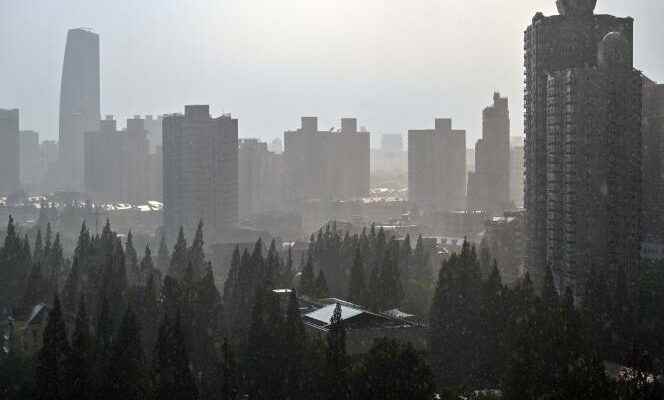It is a new manifestation of the historic drought that China has been experiencing since the beginning of the summer. Seawater seeped into drinking water reservoir abstraction areas in Shanghai’s Yangtze Estuary in early September, the municipal water bureau said in a brief statement on Oct. 11. message posted on WeChat app. This phenomenon of saline intrusion, which does not usually occur before winter and the sharp decrease in rainfall, has raised fears about the drinking water supply of the second largest city in the country and its 25 million inhabitants.
The Yangtze (called “Chang Jiang” in Chinese, a language in which “Yangtze” designates only part of the watercourse), the longest river in Asia, which originates in the northwest of the country and flows over 6,300 kilometers to the East China Sea. It is from it that comes the drinking water of three of the four main reservoirs of Shanghai. That of Qingcaosha, for example, is capable of storing up to 553 million cubic meters of water on its own, or almost half the volume of Lake Annecy.
Checks by local authorities found that salt tides had entered its abstraction areas, as well as those of the Chenhang Reservoir, on September 5 and 14, causing an interruption in water abstraction from the river. . A month later, on October 9, the Shanghai Municipal Water Bureau issued notices of water cuts in a dozen areas of the city. In the process, several supermarkets were robbed by residents worried about a long-term shortage.
To meet drinking water needs and prevent reservoirs from empty, the city has put in place a vast emergency plan to transfer fresh water from areas up the river for a period of seven months. About thirty boats – the largest of which can carry up to 10,000 cubic meters of water – are mobilized to supply the two reservoirs. Operations will continue “day and night until April 30, 2023”announced the Shanghai Maritime Security Administration on its website.
Increasingly salty surface water
In the long term, the acceleration and intensification of the salinization process in the region threaten ecosystems and agriculture, particularly for the province of Jiangsu (north of Shanghai), where 5% of the country’s cereals are produced. In some places north of the estuary, such as Nantong or Qidong, the surface water, due to its salinity, “no longer meets the needs of agricultural land irrigation”, already argued three Chinese researchers in a study published in 2020.
You have 30.9% of this article left to read. The following is for subscribers only.
